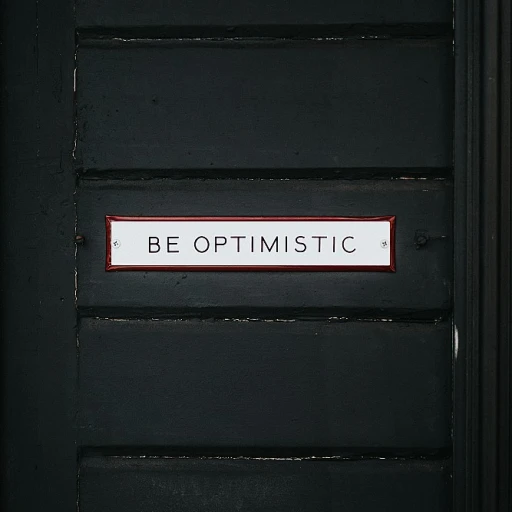Understanding the real reasons behind employee turnover
What's really causing employees to leave?
Understanding why people quit is the first step in figuring out how to keep them around. Over the years, there’s been a bunch of studies aimed at uncovering these reasons and guess what? It’s not always about the money. According to Gallup, 75% of people quit their jobs because of their managers, not the position itself (Gallup Report, 2021). That’s a pretty crazy stat if you ask me.Bad bosses or bad company culture?
Many folks point fingers at their bosses, and sure, leadership plays a crucial role. But dig a bit deeper, and you’ll find company culture also takes a hit. In a study by Deloitte, it was revealed that 88% of employees believe a distinct workplace culture is important to business success (Deloitte's Culture Pathway). It’s not just about having a ping-pong table in the break room but about genuine values and how the company lives by them.The unbearable work-life imbalance
Another biggie is the work-life imbalance. In the LinkedIn Workforce Confidence Index 2022, it showed that 50% of workers quit their jobs in the last year because they wanted more flexibility (LinkedIn Report). This shift is changing how companies are structuring their work schedules, with many offering remote or hybrid models to keep their staff happy. If you're curious about the essential duties of a Chief Human Resources Officer in keeping the balance, jump right in what is a CHRO. They play a significant role here.Lack of growth opportunities
Stagnation at a job is a fast route to the door. Research from the Work Institute’s 2020 Retention Report shows that 22% of employees left due to career development challenges (Work Institute 2020). If people can’t see a future or path forward, well, they’re inclined to look elsewhere. Offering regular training, upskilling, and clear career paths can curb this trend. Every CHRO should always be on the lookout for ways to unleash the potential of their human capital. Head over to how CHROs drive business success to get the scoop.The power of personalized employee engagement programs
Sure! Here is the part 2 of your article in JSON format:Getting to know your workforce inside out
Ever wondered why some employees leave even when everything looks peachy on the surface? Well, let's break it down. Studies estimate around 70% of employees quit due to a lack of engagement and not just better pay elsewhere (Gallup, 2017). It's not just about the paycheck; it's about feeling valued and seen.
Imagine Jane, a mid-level manager at a tech company. She's skilled, dedicated, and a real asset to the team. But she's also feeling burnt out and underappreciated. If the HR team took a bit more time to understand her career aspirations, her skills, and her pain points, they could have created a tailored engagement program that kept her happy and productive.
Bringing in data for personalization
There's no one-size-fits-all in employee engagement. Fortunately, today's technology provides us with tools that make personalization easier. According to a survey by Forbes, 56% of companies reported increased engagement through the use of AI and data analytics (Forbes, 2020). Platforms like Workday and Glint can help analyze employee feedback and performance data to offer personalized development opportunities.
Case studies: what success looks like
Take Microsoft, for instance. They moved from one-size-fits-all performance reviews to a more personalized, continuous feedback model. The results? Employee satisfaction shot up and they saw a 30% reduction in turnover (The Microsoft Story, 2018). Another example is Adobe, which replaced annual reviews with frequent check-ins. This led to a 90% satisfaction rate with their review process.
Want to get to the core of why employees stick around? Check out the role of the Chief Human Resources Officer in modern business.
Leveraging technology to enhance employee experience
Embracing the digital transformation
So, you're already digging into employee turnover and personalized engagement programs. Now let's talk tech. In this digital age, there are so many tools at your disposal to make the employee experience extraordinary, which directly hits that retention target.
According to a study conducted by Deloitte, 56% of companies are redesigning their HR programs to leverage digital and mobile tools. Yep, half of the businesses are modernizing HR with technology. That's not just a trend; it's a movement.
Think about using platforms like Slack, Zoom, and Asana. They're not just for convenience—they actively enhance collaboration, streamline tasks, and build a sense of connectedness within the team. This translates to happier employees who feel their time is valued and structured efficiently.
The Society for Human Resource Management (SHRM) reported that 70% of HR professionals see the benefit in using technology to improve employee engagement and experience. And let's be real, engaged employees stick around longer.
But it’s not all about the tools—you need actionable data. Implementing an HRIS (Human Resource Information System) can give you insights into employee turnover rates, engagement levels, and even predictive analytics to foresee potential retention risks.
Case in point, Adobe's Kickbox program, a digital toolbox that empowers employees to propose and test their ideas, showed how technology can be leveraged to foster innovation and keep employees motivated. This initiative not only sparked creativity but also contributed to higher retention rates.
Investing time in understanding and deploying the right HR tech isn't just smart; it's essential. You'll be amazed at how the right technology can bring your HR strategies to life. Don't believe us? Just check out these top 10 CFO insights to drive business success for more on how tech can revolutionize your company's performance.
Building a culture of recognition and growth
Fostering a sense of value
If there's one thing that will keep employees sticking around, it's feeling valued. Believe it or not, recognizing someone's hard work goes a long way. A recent study showed that companies with strong recognition programs see about a 31% lower churn rate. Simple 'thank yous' or a quick shoutout in an email can work wonders.
Growth opportunities
No one wants to feel stuck in a dead-end job. Employees crave growth, both personally and professionally. Companies offering ongoing training, mentorship, and clear career paths generally see higher retention rates. According to a LinkedIn Learning report, 94% of employees would stay longer at a company if it invested in their career development. It’s something worth thinking about!
Open communication channels
An often-overlooked aspect of recognition and growth is communication. Keeping channels open and encouraging feedback can create a culture of transparency. It could be as simple as regular one-on-one meetings or an anonymous suggestion box. A healthy dialogue between employees and management not only builds trust but also contributes to a supportive atmosphere where everyone feels seen and heard.





-large-teaser.webp)








